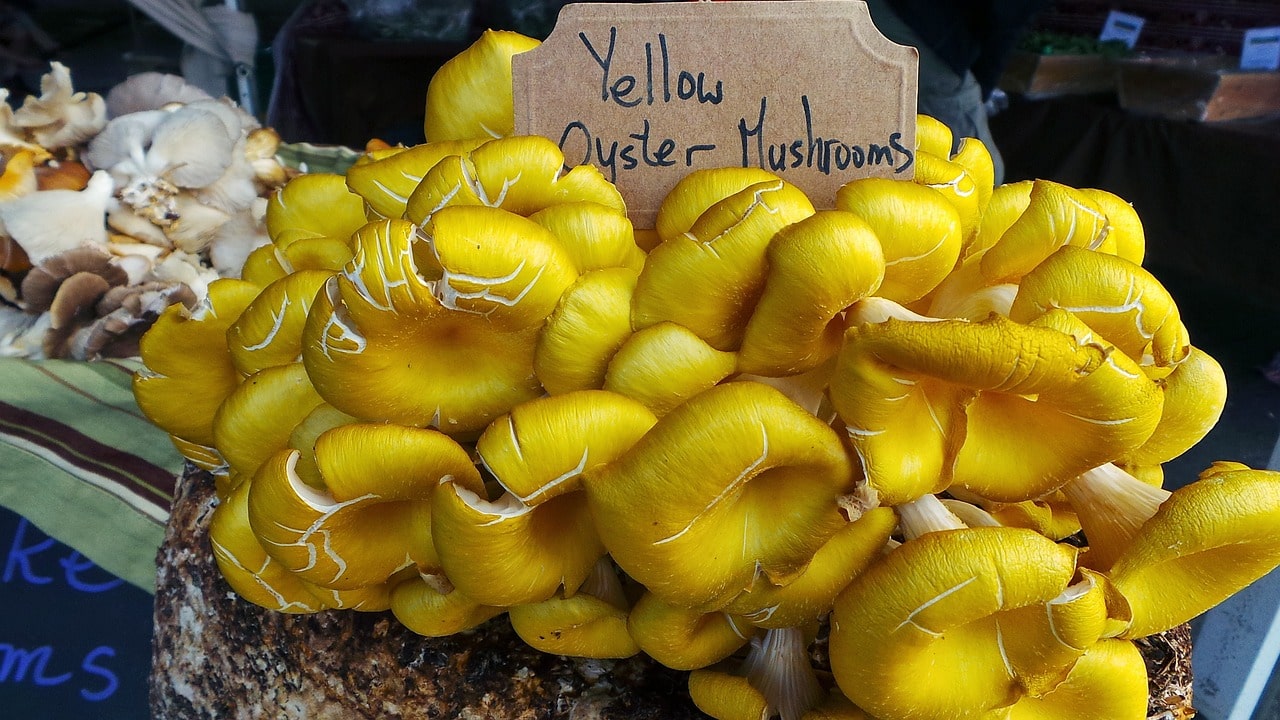Notice weak leaves or stunted growth in your garden? It could be a nitrogen deficiency.
Nitrogen is essential for plants to grow strong and healthy. Mushroom compost is a popular soil amendment known for boosting plant growth. But how much nitrogen does it contain? This article will explore the nitrogen content in mushroom compost.
The Role of Nitrogen in Plant Growth
Nitrogen is a building block for essential plant components like chlorophyll, the green pigment that helps plants convert sunlight into energy. It also plays a key role in producing amino acids, which form proteins. These proteins are crucial for plant growth, development, and overall health.
Without enough nitrogen, plants struggle to produce new leaves and stems, resulting in stunted growth and pale green or yellow leaves.

On the other hand, too much nitrogen can lead to excessive leaf growth at the expense of flowers and fruits, making plants more susceptible to diseases and pests.
Nitrogen Content in Mushroom Compost
The nitrogen content in mushroom compost can vary significantly, typically ranging from 0.5% to 1.5% on a dry-weight basis.

Several factors influence the amount of nitrogen present:
Compost age: Freshly composted mushroom compost boasts higher nitrogen levels than older compost. Over time, decomposition processes naturally reduce the available nitrogen.
Substrate composition: Mushroom compost made with straw and manure generally packs a higher nitrogen punch. Straw provides a good source of carbon, while manure contributes nitrogen. The specific type of manure used can also influence nitrogen content (e.g., chicken manure has a higher nitrogen content than horse manure).
Composting method: Aerobic composting practices, which prioritize air circulation during the decomposition process, tend to preserve more nitrogen in the final product. The air allows beneficial microbes to break down organic matter efficiently, minimizing nitrogen losses.
Because of these differences, it’s best to test your mushroom compost for nitrogen before using it. A soil test can also tell you if your plants need extra nitrogen.
Nitrogen Releasing Process
Unlike synthetic fertilizers that deliver a quick dose of nitrogen, mushroom compost provides a slow and steady release of nitrogen over time. This gradual release process is known as mineralization.
During mineralization, soil microorganisms break down the complex organic nitrogen compounds in the compost into simpler forms that plants can easily take up, primarily ammonium and nitrate.

Several factors influence the rate of nitrogen mineralization:
Compost age: Generally, nitrogen release is faster from older, well-decomposed compost than from fresh compost. Fresh compost has a higher proportion of organic nitrogen that needs to be broken down by microbes before becoming plant-available.
Soil temperature: Warmer soil temperatures create ideal conditions for microbial activity, leading to accelerated nitrogen mineralization. Cooler soil temperatures slow down the microbial breakdown of organic nitrogen.
Soil moisture: Adequate moisture is essential for microbial life to thrive. When soil is too dry, microbial activity slows down, hindering the breakdown of organic nitrogen into plant-usable forms.
Soil aeration: Good air circulation in the soil is crucial for aerobic microbes. It is involved in nitrogen mineralization to function effectively. Limited air can hinder microbial activity and slow down nitrogen release.
The presence of beneficial soil microorganisms is crucial for efficient nitrogen release. These microbes break down organic nitrogen and help convert it into plant-available forms. A healthy soil ecosystem with diverse microbial populations ensures optimal plant nitrogen utilization.
Soil Type and Nitrogen
Your soil type can significantly influence how plants access nitrogen from mushroom compost.

Sandy soils: These soils have large particles and poor water-holding capacity. While they allow for good drainage, they can also lead to rapid leaching of nutrients, including nitrogen. Mushroom compost can help improve soil structure and water retention, reducing nitrogen loss.
Clay soils: With tiny particles and excellent water-holding capacity, clay soils can sometimes hold onto nutrients too tightly, making them less available to plants. Mushroom compost can help improve soil structure and aeration, enhancing nitrogen availability.
Loamy soils: This type of soil balances sand, clay, and silt, providing good drainage and nutrient retention. Mushroom compost can further enrich loamy soils with organic matter and nutrients, including nitrogen.
Soil pH also plays a role in nitrogen availability. Most plants prefer a soil pH between 6.0 and 7.0. In acidic soils (pH below 6.0), nitrogen can be converted into a less available form to plants. Mushroom compost can help buffer soil pH and improve nitrogen uptake.
Crop-Specific Considerations
Different crops have varying nitrogen requirements throughout their growth cycle. Understanding these needs will help you optimize the use of mushroom compost.
Leafy greens: These crops are heavy nitrogen feeders, requiring a consistent nitrogen supply for vigorous growth. Mushroom compost’s slow-release nitrogen can be beneficial, but additional nitrogen supplements might be necessary during peak growth periods.

Root vegetables: While they don’t demand as much nitrogen as leafy greens, they still benefit from moderate levels. Excessive nitrogen can promote top growth at the expense of root development. Mushroom compost can be a good choice for root vegetables, providing a balanced nutrient supply.
Fruiting plants: These plants need more nitrogen during vegetative growth but less as they start to flower and fruit. Overly high nitrogen levels can delay fruiting and reduce fruit quality. Mushroom compost can be used cautiously for fruiting plants, especially during early growth.
It’s important to consider the specific nitrogen requirements of your crops and adjust the amount of mushroom compost accordingly.
Remember, it’s often beneficial to combine it with other organic matter or fertilizers to meet the complete nutritional needs of your plants.
One last thought
When mixed with other organic components, mushroom compost can boost plant nutrition. Combining mushroom compost and worm castings can boost soil structure and nutritional balance. This is how you can get the most out of mushroom compost and make a great environment for your plants.




